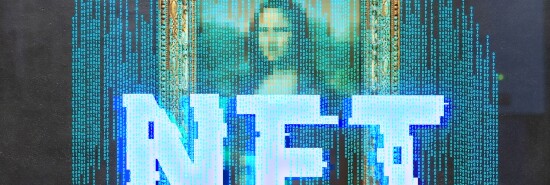
Invest in feeling good (for others feeling bad)
Rob Long
Every now and then, you have to allow yourself to be happy at someone else’s misfortune. You’re not supposed to, of course. Schadenfreude is often considered an unattractive emotion that leads to a curdled and bitter perspective. But my motto is, as long as it doesn’t get out of hand, there’s nothing wrong with celebrating the failures and reversals in another person’s life. For instance, I read recently that almost 95% of all non-fungible tokens, those digital “assets” everyone was talking about a few years ago, are totally worthless.
A quick recap: A non-fungible token, also known as an NFT, is a unit of data stored on a digital ledger, called a blockchain, that certifies a digital asset to be unique and therefore not interchangeable. NFTs can be used to represent items such as photos, videos, audio, and other types of digital files.
FORGET THE HYPE ON FRENCH COOKING, THROW AWAY THE MICHELIN GUIDE, AND GRAB SOME ITALIAN
I don’t really know what those words mean, by the way. Sure, I know what all of those words mean individually. Digital, ledger, asset, unique — check. I’m a little fuzzy on “blockchain,” but I get the general gist: It’s a giant chain of code floating around somewhere, or several somewheres since it’s in many places, and it keeps indelible track of, well, stuff. Bitcoin transactions. Ownership custody chains of digital things. Copyrights.
We’ve all been hearing about NFTs for a while. They’ve been sold on the web by shady dealers with creepy screen names and at Christie’s and Sotheby’s by people with English accents in black tie. There have been countless articles and roundups describing the astonishing bull market in digital assets, as well as many attempts to explain what they actually are.
One of the regular, instinctive, fleeting thoughts that runs through my brain when I read about a new piece of technology or a trend in the world of computing is, “Does this piece of information benefit me in some way financially?”
So I did some research. “What, exactly, is a non-fungible token?” I typed into my Google search box. It sent me to several sites promising a clear and jargon-free explanation. To no success. I did not then, and do not now, have any firm grasp on what anyone was talking about.
And trust me, I did my very best to get through the word salad of the FAQ sections — sometimes more than once! — and I discovered that the reason some questions are asked so frequently is because the answers are so tedious.
But what I finally concluded was that, when you get right down to it, when people buy an NFT, what they are really buying is a link to a JPEG file. Like the kind you send to your friends of a funny meme or an off-color joke.
I mean, I know it’s more complicated than that, but that seemed to be the gist. Oh, sure, people talked a big game — NFTs were going to change the art world, the collectibles market, the entire way we compensate people for their creative products. NFTs were a brand new asset class, a way to invest in art and innovation using the immense power of the blockchain.
But here’s my fundamental rule about investing: If it seems like the people pushing an opportunity are making a simple idea needlessly more obscure, keep your money in your pocket. If you are being asked to buy something you cannot eat or wear or turn quickly into real, spendable money, think twice. And then think three times. And then try to explain the concept to someone older and grumpier (and for me, this group is getting smaller and smaller). And when they look at you blankly and still don’t get it, take the money you were going to use to buy NFTs and put all of it into a no-load index fund and forget about it.
And if you do exactly that, you will probably be rewarded with a delicious shiver of ugly schadenfreude when you read that 95% of those things that you didn’t understand anyway are worthless and your simple, easily explained investment in an S&P index fund has done pretty OK.
But don’t celebrate too much. Because it’s entirely possible that the remaining 5% of NFTs have exploded in value, which means that some of those irritating boosters of non-fungible tokens are seriously rich. And that’s the problem with being happy at someone else’s misfortune: It’s always someone else and never everyone else.
CLICK HERE TO READ MORE FROM THE WASHINGTON EXAMINER
Rob Long is a television writer and producer, including as a screenwriter and executive producer on Cheers, and he is the co-founder of Ricochet.com.
